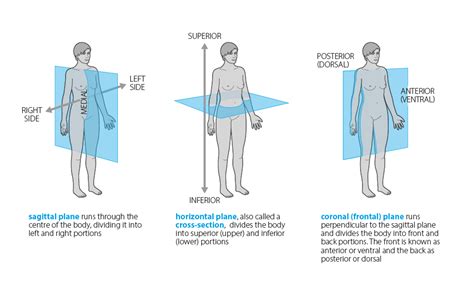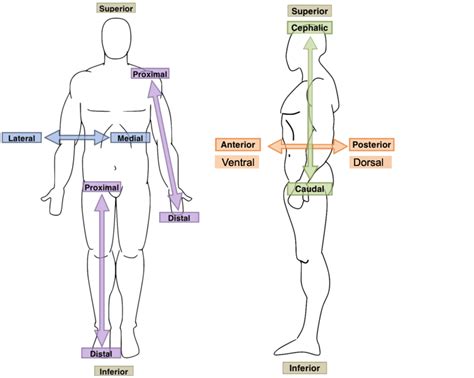Understanding the health status of patients is crucial in providing effective care, and Anatomy and Physiology education plays a significant role in achieving this. By learning about the structure and function of the human body, healthcare professionals can assess, evaluate, diagnose, and track a patient’s health. The theories and principles of this subject provide a comprehensive understanding of the overall condition of the human body, which is essential in identifying and treating health issues. With a solid foundation in Anatomy and Physiology, healthcare providers can deliver better care and improve patient outcomes.
Why should you study anatomy and physiology together?
Understanding how the body functions to sustain life is the basis of physiology. Anatomy and physiology are intertwined, as it is challenging to comprehend the structure without knowing its function. The interdependence of form and function is evident in all living organisms, and therefore, these two disciplines are usually studied together.
How does anatomy and physiology work together?
The life sciences encompass many areas of study, but two of the most fundamental are anatomy and physiology. Anatomy is concerned with the physical structures of the body, both inside and out, and how they relate to one another. Physiology, on the other hand, focuses on the functions of those structures and how they work together to keep the body functioning properly. Understanding both anatomy and physiology is crucial for anyone interested in the workings of the human body.
How do anatomy and physiology depend on each other?
Physiology and anatomy are closely intertwined because the function of a body part is largely determined by its location and structure. If a body part’s structure does not allow it to perform a certain function, then that function cannot be carried out. This is why understanding the anatomy of the body is crucial to understanding its physiology. In other words, physiology cannot be fully understood without a solid understanding of anatomy.
Should I take anatomy and physiology together or separate?
It is crucial for students to have a solid grasp of anatomy before delving into physiology, as the latter is built upon the foundation of the former. Attempting to learn both subjects at once can be challenging, which is why it is recommended to take them as separate courses. By mastering anatomy first, students can better comprehend the intricacies of how the body functions and apply that knowledge to the study of physiology. This approach can lead to a more comprehensive understanding of the human body and its processes.
How are anatomy and physiology separate but best when considered together?
In essence, the field of anatomy involves examining the composition and characteristics of various body parts, whereas physiology focuses on understanding how these parts work together and operate within the body. This means that anatomy is concerned with identifying and describing the physical features of organs, tissues, and other structures, while physiology delves into the mechanisms and processes that enable these structures to perform their respective functions. By studying both anatomy and physiology, we can gain a comprehensive understanding of the human body and how it functions as a complex and interconnected system.
Why is it difficult to separate anatomy and physiology from each other?
Rewritten: “`Anatomy and physiology are closely related topics as they both deal with the human body. While anatomy focuses on the structures of the body, physiology explains how these structures work together to carry out vital life processes. It is important to understand both aspects in order to have a comprehensive understanding of the human body and its functions.“`
What is the relationship between anatomy and physiology and their subdivisions?
Understanding the structure, location, and organization of different parts of the body is crucial to comprehending physiology. Anatomy and physiology work together to explain the structure and function of the various components of the human body, providing insight into what it is and how it operates. By studying anatomy, we can gain a deeper understanding of the body’s inner workings and how they contribute to overall health and well-being.
Are anatomy and physiology inseparable?
The principle of complementarity of structure and function highlights the inseparable nature of anatomy and physiology. While they can be studied separately, their interdependence is crucial because the function of a structure is always determined by its form. In other words, the way a structure operates is directly related to its specific shape and composition. This principle is essential to understanding how the human body works and how different systems interact with each other.
By recognizing the complementary relationship between structure and function, we can gain a deeper appreciation for the complexity and interconnectedness of our bodies.
What is the basic knowledge of anatomy and physiology?
The study of anatomy and physiology delves into the intricate workings of the human body. It encompasses the physical arrangement of body parts and the inner workings of cells, tissues, and organs. By understanding how these systems and structures interact, we can gain a deeper appreciation for the complexity of the human body and how it functions. Whether you’re interested in pursuing a career in healthcare or simply want to learn more about your own body, studying anatomy and physiology can be a fascinating and rewarding experience.
What is the general objective of anatomy and physiology?
Within the human body, there are various anatomical structures that serve to protect and surround the brain. These structures include the skull, meninges, and cerebrospinal fluid. The ventricles of the brain are also important structures that play a crucial role in maintaining brain health. These fluid-filled spaces help to cushion and protect the brain, while also providing a pathway for the circulation of cerebrospinal fluid.
Additionally, blood vessels that supply the brain with oxygen and nutrients are also essential for maintaining brain function. The brain stem is another important structure that is responsible for regulating many of the body’s vital functions, such as breathing, heart rate, and blood pressure. Understanding the functions of these structures is crucial for maintaining brain health and preventing injury or disease.
What are the similarities between anatomy and physiology?
The study of anatomy involves examining the various organs and tissues that make up an organism, while physiology focuses on how these structures work together to maintain bodily functions. Although they approach the study of organisms from different angles, both anatomy and physiology are concerned with the internal structures of living beings.
What is the relationship between anatomy and physiology quizlet?
The relationship between anatomy and physiology is crucial to understanding how the human body works. While both are important, anatomy is considered more fundamental as it provides the foundation for physiological functions. Physiological functions are carried out by a variety of general structures, but they are also performed by specific structures that are unique to certain organs or systems. By studying both anatomy and physiology, we can gain a comprehensive understanding of how the body functions and how to maintain optimal health.
Are anatomy and physiology linked?
The relationship between anatomy and physiology is crucial for a comprehensive understanding of the human body. The structure and function of our organs and systems are interdependent and work together to maintain our health. In the medical field, these two subjects are taught in conjunction with each other to provide a detailed understanding of how the body works. It’s important to recognize that anatomy and physiology are symbiotic and cannot be fully understood in isolation from each other.
Who explained the relationship of anatomy with physiology?
Jean François Fernel, a 16th-century French physician, once said, “Anatomy is to physiology as geography is to history; it describes the theatre of events.” This quote highlights the importance of understanding the structure of the body in order to comprehend its functions. Physiology, which Fernel introduced as the study of the body’s function, relies heavily on knowledge of anatomy. Just as geography provides context for historical events, anatomy provides context for physiological processes.
What is the difference between anatomy and physiology and how they work together?
The field of anatomy focuses on the structure and makeup of the body’s various parts, including cells, tissues, and organs. Meanwhile, physiology delves into the chemical processes and interactions that occur within these structures, as well as the organ systems that work together to maintain overall health and wellbeing. By understanding both anatomy and physiology, we can gain a deeper appreciation for the complexity and interconnectedness of the human body, and how it functions to sustain life.
Is anatomy and physiology one of the hardest college classes?
Are you finding Anatomy and Physiology challenging? You’re not alone. This course is notoriously difficult, particularly for those pursuing careers in healthcare. The sheer volume of information can be overwhelming, and mastering it will require a significant amount of effort. However, with dedication and persistence, you can succeed in this subject.
Which is harder anatomy and physiology?
According to studies (14, 22), it appears that students tend to struggle more with learning physiology content compared to anatomy. However, there is a lack of research on the specific reasons behind this difficulty.
How hard is it to pass anatomy and physiology 1?
Learning anatomy and physiology can be challenging due to the vast amount of material that needs to be memorized. It is a class that demands several hours of study each week to fully comprehend the subject matter.
Which is harder A&P 1 or 2?
AP2 is a more challenging course than AP1. While AP1 focuses on memorizing body parts, AP2 delves deeper into understanding how and why these parts work together. In addition to memorization, students in AP2 must also grasp the complex relationships between different body systems. This requires a higher level of critical thinking and problem-solving skills.
Despite its difficulty, AP2 provides a more comprehensive understanding of the human body and prepares students for further studies in healthcare or related fields.
Related Article
- Why Is It Important To Resolve Asset Ownership Conflicts Quickly?
- Why Is It Important To Prevent Gorillas From Becoming Extinct?
- Why Is It Illegal To Educate A Dog In Connecticut?
- Why Is It Harder To Balance With Your Eyes Closed?
- Why Is It Disrespectful To Wear A Hat In School?
- Why Is It Difficult To Use Project Management Software Well?
- Why Is It Bad To Whistle At Night In Hawaii?
- Why Is Hulu No Longer Supported On My Lg Tv?
- Why Is George Unhappy When He Returns To The Ranch?
- Why Is Gatsby’S Love For Daisy Described In Religious Terms?


